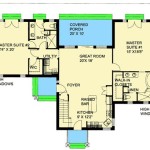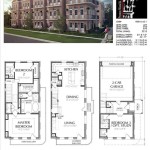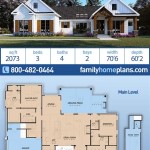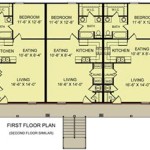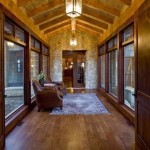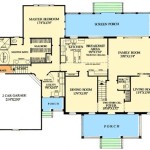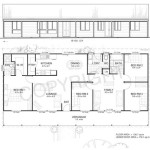3 Bedroom House Plans With Dimensions: A Comprehensive Guide
The selection of a house plan is a critical step in the home-building process. For many families, a 3-bedroom house plan represents an ideal balance between space, affordability, and functionality. Understanding the dimensions and layout options within these plans is essential for making an informed decision that aligns with lifestyle needs and budgetary constraints. This article provides a detailed overview of 3-bedroom house plans, focusing on the significance of dimensions and exploring various design considerations.
The term "3-bedroom house plan" broadly encompasses a wide range of architectural styles and square footage. These plans typically feature a master bedroom with an attached bathroom, along with two additional bedrooms that often share a common bathroom. The remaining living spaces, such as the living room, kitchen, dining area, and potentially a home office or recreational room, vary significantly depending on the overall size and design of the house. Therefore, careful consideration of the dimensions and how they impact the flow and usability of each space is paramount.
Understanding Dimensional Requirements
Before diving into specific 3-bedroom house plans, it is crucial to understand the basic dimensional requirements for each room. These dimensions are not arbitrary; they are based on ergonomic considerations, building codes, and general comfort levels. Ignoring these requirements can lead to a cramped or inefficient living space, regardless of the overall square footage of the house.
Bedrooms: The minimum size for a bedroom, according to most building codes, is around 70 square feet, with at least one dimension being 7 feet. However, for a comfortable 3-bedroom layout, particularly for the master bedroom, larger dimensions are recommended. A typical master bedroom might range from 12 feet by 14 feet (168 square feet) to 14 feet by 16 feet (224 square feet) or larger, depending on the inclusion of a walk-in closet and ensuite bathroom. Secondary bedrooms often fall within the range of 10 feet by 10 feet (100 square feet) to 12 feet by 12 feet (144 square feet). These dimensions allow for a bed, a dresser, and some walking space.
Bathrooms: Bathroom dimensions are influenced by the fixtures they contain. A basic full bathroom with a toilet, sink, and shower stall might measure around 5 feet by 8 feet (40 square feet). Larger master bathrooms, featuring a double vanity, soaking tub, and separate shower enclosure, can easily exceed 10 feet by 10 feet (100 square feet). Half-bathrooms, containing only a toilet and sink, can be as small as 3 feet by 6 feet (18 square feet). The placement of doors and windows within the bathroom also plays a critical role in determining the usable space.
Living Areas: Living rooms, dining rooms, and kitchens require flexible dimensions to accommodate furniture and movement. A small living room in a 3-bedroom house might start at around 12 feet by 15 feet (180 square feet), while larger, more open-concept living areas can easily exceed 20 feet by 20 feet (400 square feet). Dining areas should be large enough to comfortably seat the intended number of occupants. Kitchen dimensions vary greatly depending on the layout (galley, L-shaped, U-shaped, island) and the inclusion of features like pantries and breakfast bars. Islands often require at least 3 feet of clearance around them for comfortable movement.
Other Spaces: Hallways should ideally be at least 3 feet wide to allow for easy passage. Closets require a minimum depth of 2 feet for hanging clothes. Garages should be sized appropriately for the number of vehicles they are intended to house, typically requiring around 10 feet of width per vehicle. Entryways and foyers should be large enough to prevent bottlenecks and provide a welcoming impression.
When reviewing 3-bedroom house plans with dimensions, it is crucial to scrutinize each room's measurements and visualize how the space will be used. Pay attention to the placement of doors and windows, as these can significantly impact furniture placement and the overall flow of the house. Consider whether the dimensions accommodate the intended furniture and activities.
Common 3-Bedroom House Plan Layouts
The arrangement of rooms within a 3-bedroom house plan can vary considerably, influencing the overall functionality and perceived spaciousness of the house. Several common layouts are prevalent, each with its own advantages and disadvantages. Understanding these layouts can aid in selecting a plan that best suits individual needs.
Ranch Style: Ranch-style homes are typically single-story and feature a horizontal layout, often with bedrooms clustered together on one side of the house and living areas on the other. This layout promotes easy accessibility and is well-suited for individuals with mobility limitations. Ranch-style homes often have larger footprints than multi-story homes of comparable square footage. The dimensions within a ranch-style 3-bedroom house plan tend to be more generous, allowing for wider hallways and larger rooms.
Two-Story: Two-story house plans offer a greater square footage on a smaller footprint, making them suitable for smaller lots. Bedrooms are typically located on the upper floor, providing a degree of privacy from the living areas below. Staircases are a key consideration in two-story plans, as they consume valuable floor space and can present accessibility challenges. The dimensions of rooms in a two-story house can be more compact than in a ranch-style, necessitating careful consideration of furniture placement.
Split-Level: Split-level homes feature multiple levels connected by short flights of stairs. This layout can create a sense of separation between different living areas, but it may also pose accessibility challenges. Split-level 3-bedroom house plans often have bedrooms on a separate level from the main living area, providing a moderate degree of privacy. The dimensions of rooms in a split-level home can vary depending on the specific design, requiring careful evaluation of each level.
Open Concept: Open-concept layouts integrate the living room, dining room, and kitchen into a single, large space. This design promotes social interaction and creates a sense of spaciousness. However, it can also lead to noise and visual clutter. Open-concept 3-bedroom house plans typically feature larger living areas to accommodate the combined functions of multiple rooms. Dimensions are crucial in open-concept designs to ensure adequate space for furniture and movement.
Traditional Layout: Traditional layouts feature more defined rooms, with separate spaces for the living room, dining room, and kitchen. This design provides greater privacy and noise control. However, it can also feel more confined than open-concept layouts. Traditional 3-bedroom house plans often have smaller, more compartmentalized rooms. Careful consideration of dimensions is necessary to maximize the functionality of each space.
When evaluating different 3-bedroom house plan layouts, consider the specific needs and preferences of the occupants. Choose a layout that aligns with lifestyle habits and promotes comfortable living.
Key Considerations for Selecting a Plan
Several factors beyond just the dimensions of individual rooms should be considered when selecting a 3-bedroom house plan. These factors include the overall square footage, the orientation of the house on the lot, the architectural style, and the inclusion of amenities. A holistic approach to plan selection is essential for ensuring a satisfactory outcome.
Square Footage: The overall square footage of a 3-bedroom house plan should be appropriate for the size of the family and their lifestyle needs. A smaller house will be more affordable to build and maintain, but it may feel cramped and lack storage space. A larger house will provide more room to spread out, but it will also be more expensive. Consider the long-term needs of the family when determining the appropriate square footage.
Orientation: The orientation of the house on the lot can significantly impact energy efficiency and natural lighting. Orienting the house to maximize southern exposure in colder climates can reduce heating costs, while orienting it to minimize western exposure in warmer climates can reduce cooling costs. The placement of windows and doors should also be considered in relation to the sun's path.
Architectural Style: The architectural style of the house should be aesthetically pleasing and compatible with the surrounding environment. Common architectural styles for 3-bedroom houses include ranch, craftsman, modern, and colonial. Consider the long-term appeal of the style and its impact on resale value.
Amenities: The inclusion of amenities, such as a home office, a recreational room, a mudroom, or a covered patio, can enhance the functionality and enjoyment of the house. Carefully consider which amenities are essential and which are desirable. The dimensions of these amenities should be factored into the overall square footage of the plan.
Accessibility: Consider the accessibility of the house for individuals with mobility limitations. Features such as wider doorways, ramps, and grab bars can make the house more accessible. Single-story homes are generally more accessible than multi-story homes.
Storage: Adequate storage is essential for maintaining an organized and clutter-free home. Consider the amount of closet space, pantry space, and garage space provided in the plan. Attics and basements can also provide valuable storage space.
Future Needs: Think about the long-term needs of the family and how the house will accommodate future changes, such as the addition of new family members or the need for aging-in-place modifications. Choose a plan that is adaptable and flexible.
By carefully considering these factors, it is possible to select a 3-bedroom house plan that meets the needs and preferences of the occupants and provides a comfortable and functional living space. Examining scaled drawings with clearly defined dimensions is paramount to visualizing the finished product and making an informed decision.

Awesome Free 3 Bedroom Floor Plan With Dimensions And Review Plans Apartment House

Beautiful Three Bedroom House Plans Blog Floorplans Com

Floor Plan For Small 1 200 Sf House With 3 Bedrooms And 2 Bathrooms Evstudio

130 Best 3 Bedroom Floor Plan Ideas House Plans Small

3 Bedroom House Plans Modern Country More Monster

Popular And Stylish 3 Bedroom Floorplans Plans We Love Blog Homeplans Com

Spacious Cottage 3 Bed 2 Bath 40 X40 Custom House

3 Bedroom Contemporary Home Design Pinoy House Designs Plans Layout

3 Bedroom Floor Plan With 2 Car Garage Max Fulbright Designs

3 Bedroom House Plan With Metal Siding 70782mk Architectural Designs Plans

